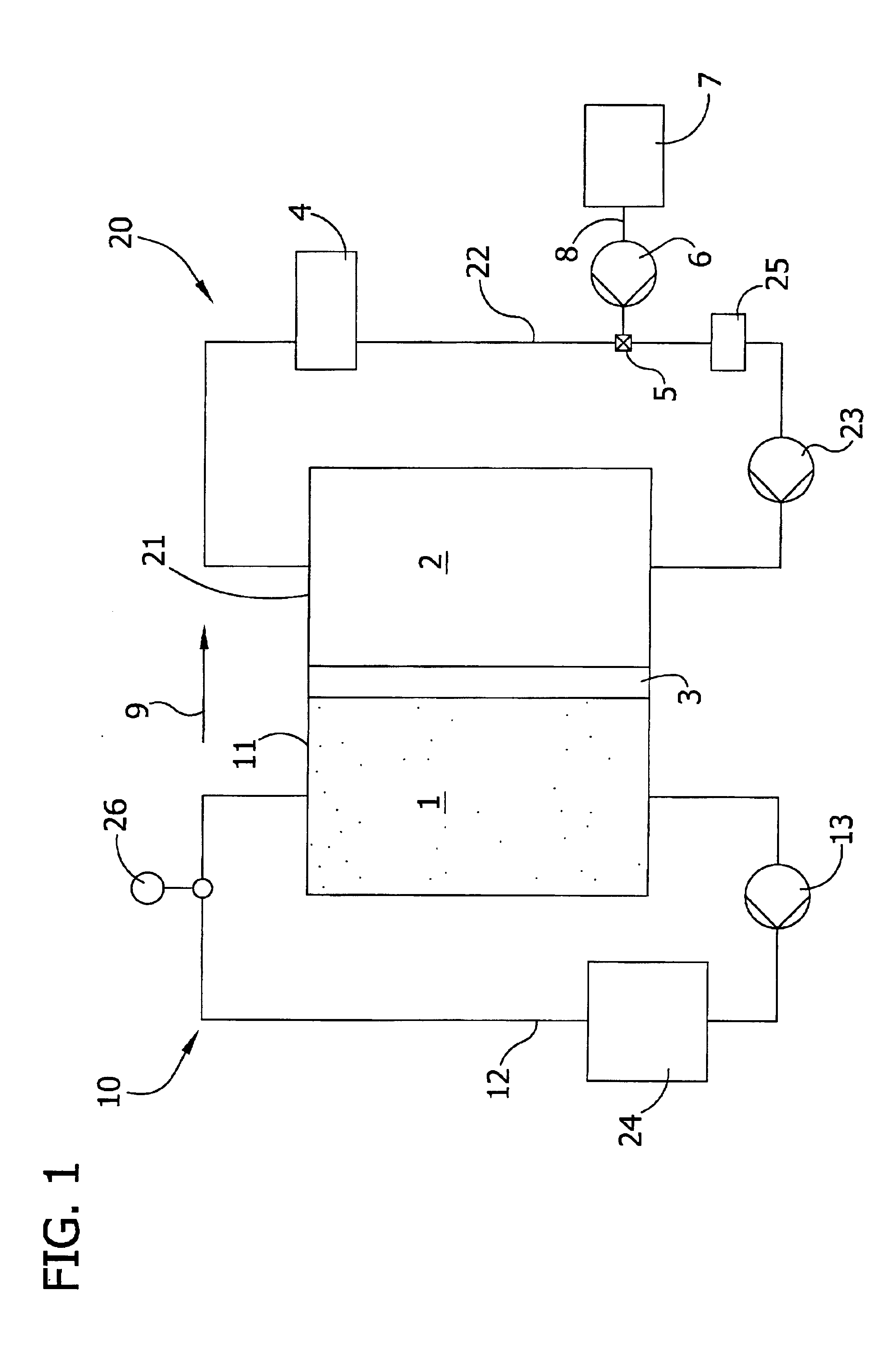Method and apparatus of purifying an electrolyte
a technology of electrolyte and purification method, which is applied in the direction of filtration separation, liquid/solution decomposition chemical coating, separation process, etc., can solve the problems of unintentional contamination of electrolyte, inability to completely prevent the transfer of undesirable chemicals into the electrolyte, and inability to effectively avoid the transfer of chemicals used in the previous processing steps
- Summary
- Abstract
- Description
- Claims
- Application Information
AI Technical Summary
Benefits of technology
Problems solved by technology
Method used
Image
Examples
Embodiment Construction
The basic idea of the present invention is to free the contaminated electrolyte from contaminants by using a suitable purifying liquid and thus to make available a reusable electrolyte in an environmentally benign manner. The purification of the electrolyte can be carried out either continuously, i.e., during the metal deposition cycle, or after conclusion of the metal deposition in a separate recycling step. The advantage in both cases is that the purification method according to the present invention can be readily integrated into already existing operating cycles and that the contaminated electrolyte can be purified in an inexpensive and, in particular, environmentally benign manner.
This method provides that the electrolyte be brought into contact with an effective surface of a separating unit. This separating unit can be permeated by those contaminants that must be removed from the electrolyte. Such contaminants include, for example, ions originating in upstream processing steps...
PUM
| Property | Measurement | Unit |
|---|---|---|
| concentration | aaaaa | aaaaa |
| temperature | aaaaa | aaaaa |
| pressure | aaaaa | aaaaa |
Abstract
Description
Claims
Application Information
 Login to View More
Login to View More - R&D
- Intellectual Property
- Life Sciences
- Materials
- Tech Scout
- Unparalleled Data Quality
- Higher Quality Content
- 60% Fewer Hallucinations
Browse by: Latest US Patents, China's latest patents, Technical Efficacy Thesaurus, Application Domain, Technology Topic, Popular Technical Reports.
© 2025 PatSnap. All rights reserved.Legal|Privacy policy|Modern Slavery Act Transparency Statement|Sitemap|About US| Contact US: help@patsnap.com


